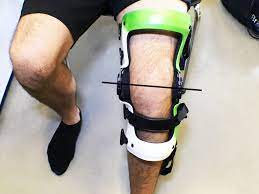Knee braces can be useful for a variety of reasons, from injury prevention to rehabilitation. If you’re considering getting one, it’s important to know how to properly use and maintain it. Not all knee braces are created equal, and usage can vary depending on the type of injury or activity. In this comprehensive guide, we’ll cover everything you need to know about knee braces, including usage, maintenance, and even tips on finding the right fit.
Types of Knee Braces
There are two types of knee braces: functional and prophylactic. Functional braces are typically used after an injury or surgery to help support and stabilize the knee joint. Prophylactic braces, on the other hand, are designed to prevent injuries by providing extra support during physical activity. There are also knee sleeves, which are made from neoprene and provide compression and warmth to the knee. Understanding the different types of knee braces can help you determine which one is best for your needs.
When to Wear a Knee Brace
Knee braces can be worn for a variety of reasons, and it’s important to know when to wear one. If you have an existing knee injury, such as a ligament tear or meniscus injury, a functional brace can help support and protect the knee during physical activity. Prophylactic braces are typically worn by athletes or individuals engaging in high-impact activities to prevent potential injuries. Knee sleeves are useful for providing compression and warmth to the knee joint, which can be helpful for managing arthritis or during periods of increased physical activity.
How to Properly Fit a Knee Brace
Properly fitting a knee brace is essential for effective usage and prevention of further injury. Most knee braces come in a variety of sizes, so it’s important to measure your leg and consult with a medical professional if necessary. The brace should fit snugly, but not too tight or too loose. It’s important to adjust any straps or cushioning to ensure proper fit and support.
Maintenance and Care
Proper maintenance and care of your knee brace can help prolong its lifespan and effectiveness. It’s important to clean the brace after each use, using a mild soap and water. Avoid using harsh chemicals or abrasive materials that can damage the brace. Make sure the brace is completely dry before storing it to prevent any mold or mildew growth. Regularly inspect the brace for any signs of wear or damage, and replace it if necessary.
Additional Tips
When it comes to using knee braces, there are a few additional tips to keep in mind. First, avoid overuse or relying too heavily on the brace. While it can provide support and protection, it’s important to also work on strengthening the muscles around the knee joint to prevent future injuries. Additionally, be sure to follow any specific instructions or recommendations from your medical professional. This may include limiting certain activities or wearing the brace only during certain times.
Conclusion:
Knee braces can be a helpful tool for preventing injuries and managing existing injuries. By understanding the different types of braces, when to wear them, and how to properly fit and maintain them, you can make the most of their benefits. Remember to always consult with a medical professional for any specific recommendations or instructions. Taking proper care of your knee brace can help ensure its effectiveness and prolong its lifespan. With these tips and knowledge, you’ll be better equipped to make the most of your knee brace and keep your knees healthy and strong.




